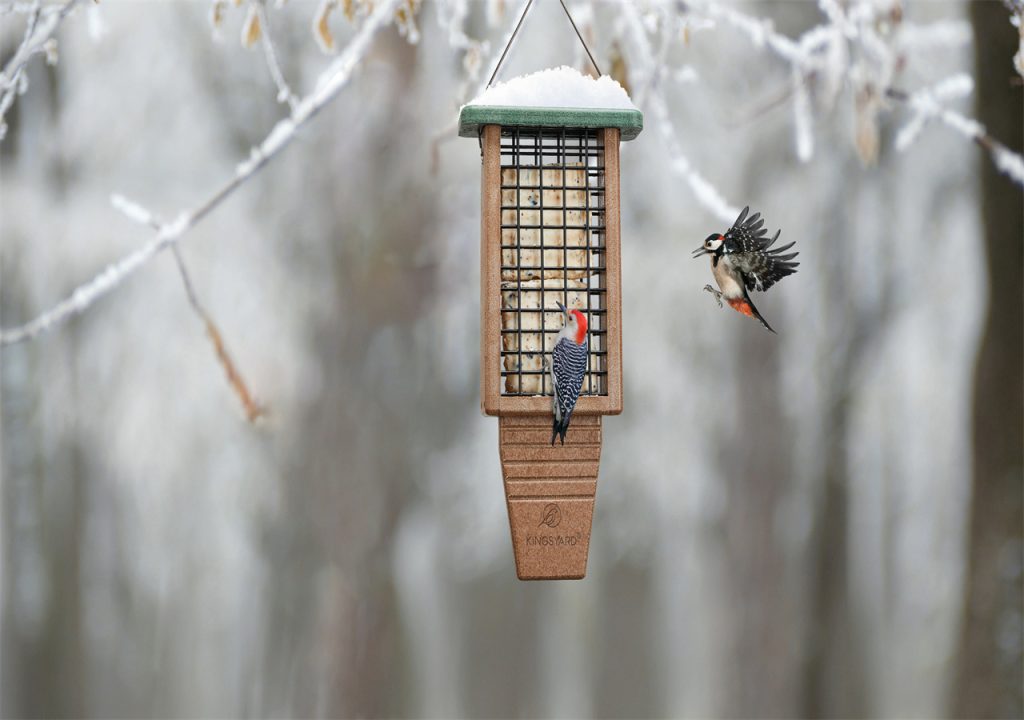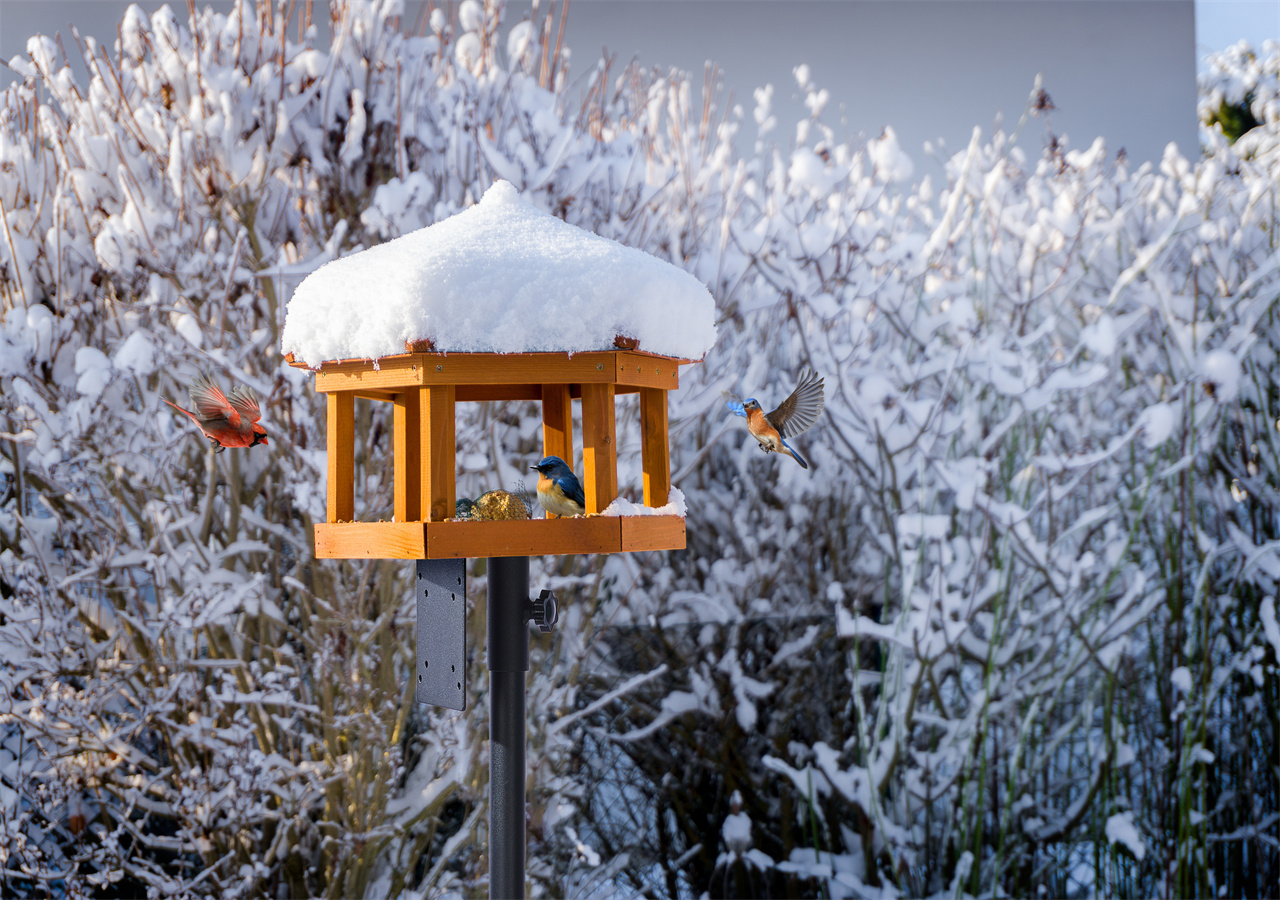Although we normally associate birds with spring, some stick around for the winter. Many of us likely have vivid memories of seeing cardinals visiting our snow-covered back decks or blue jays spending time at their birdhouses.
While we humans shiver at times, even when we bundle up, many birds endure the cold in a variety of ways. According to Khan Academy, endotherms, including birds and mammals like us, use energy-produced heat to keep our body temperatures around the same levels regardless of what conditions outside are like. Do you know more ways about birds survive frigid conditions?please go on reading.
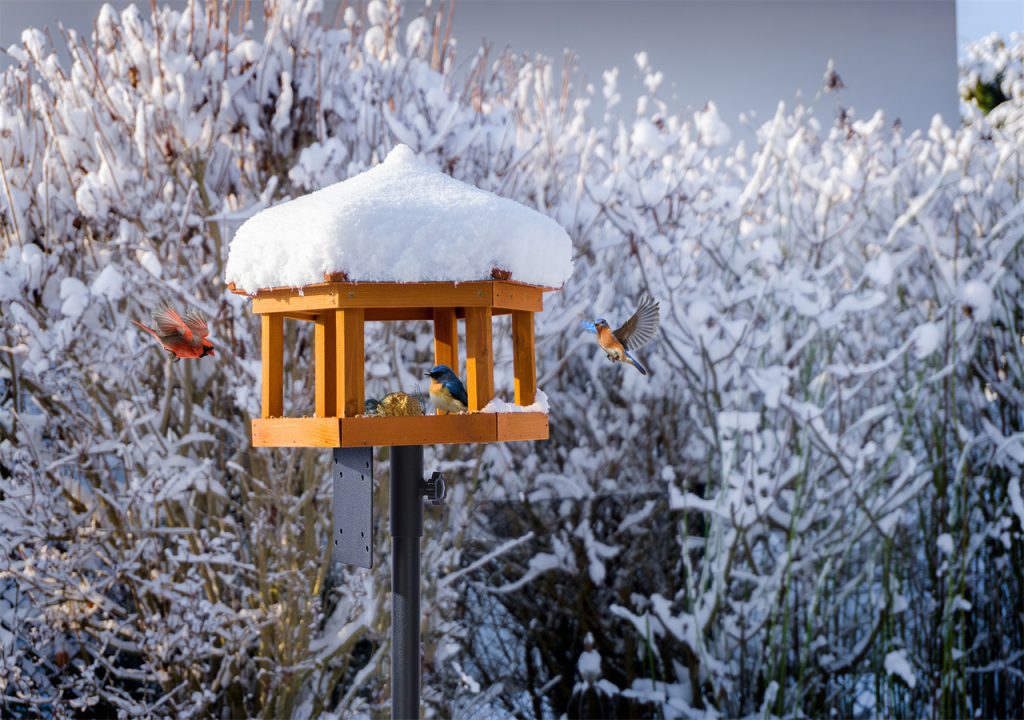
How Birds Prepare for Winter Food Supply
Thankfully, birds understand what is happening enough to prepare for the winter.
For instance, chickadees and finches will spend late summer to fall looking for food to gain enough body weight for sufficient insulation and energy. They will increase their weight by at least 10 percent. Indeed, heavier feathers can warm birds the same way winter coats can warm humans.
Numerous birds will also place food, such as seeds, in many spots to ensure that they return to them in the winter when they aren’t available. Plus, by the time fall rolls around, they may alter their diets to fruit and nuts when not as much food is available, even when they have already stored the seeds.
What Can Human do to Help Birds Get Through?
What role can I have in this? You can use a squirrel proof bird feeder to attract birds. This way, the birds may have the time of their lives. It will be a good idea to purchase items such as meal worms, peanuts, seeds and suet weekly at your local grocery stores, so they can eat foods they can’t access outside in the winter. Cheese and unsalted peanut butter also work well.
Foods you want to avoid feeding birds include salty foods due to adverse nervous system effects, meat due to quick spoilage and its ability to attract other animals, milk because diarrhea may make birds lose fluids, bread and chocolate due to the lack of nutrition, and any other spoiled food in general.
In addition, when bodies of water are frozen, you can ensure the birdhouse has a bird bath heater to give birds the amount of water they need and feed them water. This way, birds do not need to constantly visit frozen ponds, lakes or rivers to melt the ice. It’s less work on their part.
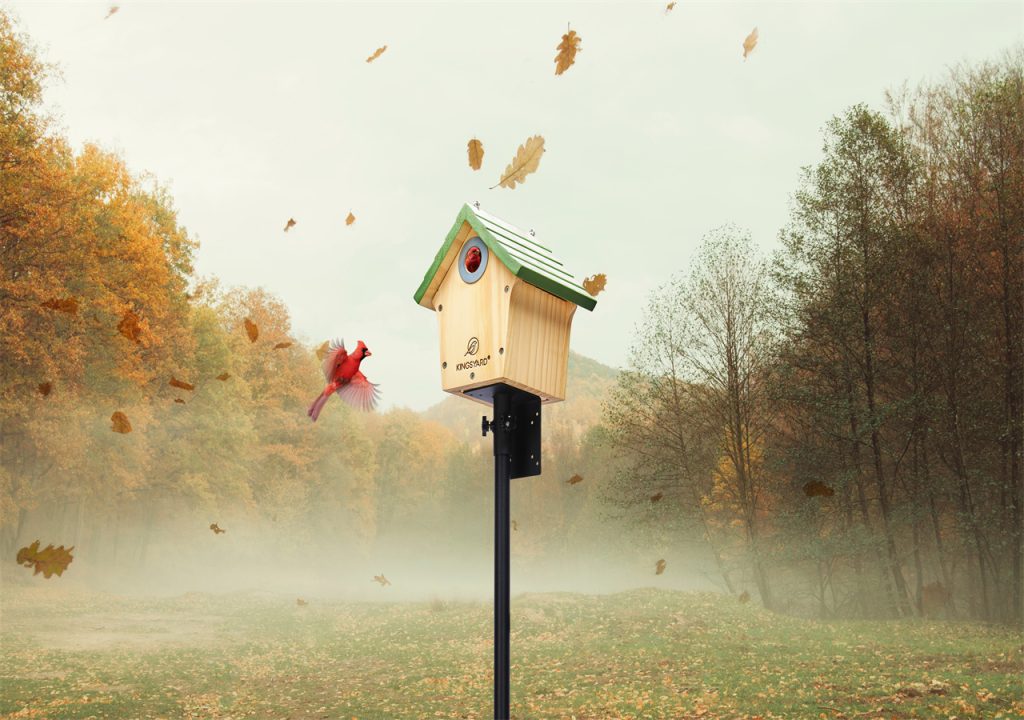
Would a Suet Feeder Work Best?
It will be important to determine what kind of feeder and food you will use to attract certain birds. Woodpeckers are suet-magnets, while chickadees and finches like tube feeders with mixed and sunflower seeds. Smaller birds may still like suet, however. Also, make sure the feeder won’t attract too many other animals.
Suet feeders often work best in general because suet is a beneficial fat for birds to get their energy to survive those difficult freezing nights. You won’t just get one bird or two, your feeder may be like a cafeteria line or a hotel buffet because many birds may enter the picture. If you could get at least a couple of other suet feeders, that will be even better.
One should be aware that suet and 90°F+ heat don’t go well together because suet will melt, but it’s perfectly good for the colder weather.
Using Body Energy to the Max
What are some examples of how birds boost their energy to keep warm during the colder times? Keep reading to get your mind intrigued.
Fluffing Feathers
Feathers play a crucial role in keeping birds warm and healthy. Birds will insulate themselves by fluffing their feathers. This is similar to humans getting goosebumps; only we more often wear warmer clothes to not get goosebumps too often.
How do birds effectively fluff their feathers? They use a method known as preening, which is to clean and dry their feathers. As birds have an oil that forms by their tails, they, depending on how well they can handle cold compared to the average bird, either use that to weatherproof feathers or they grow additional feathers that create a powder to waterproof them.
Tucking Feet
For feet, birds use a method known as countercurrent heat exchange. As it is difficult for birds to keep their feet warm in wintry weather due to a lack of feathers on their feet and legs, they use countercurrent heat exchange to make up for this. This heat exchange allows cold blood in the foot to interact with warm blood from the body through veins, which ensures warmer arteries supply heat to the colder veins.
You’ve likely seen a goose stand on one leg before and wonder if it is a habit or if there is a good reason behind this. There is. Birds try to tuck one leg inside their belly feathers to ensure countercurrent heat exchange.A Kingsyard wooden birdhouse with blue roof.
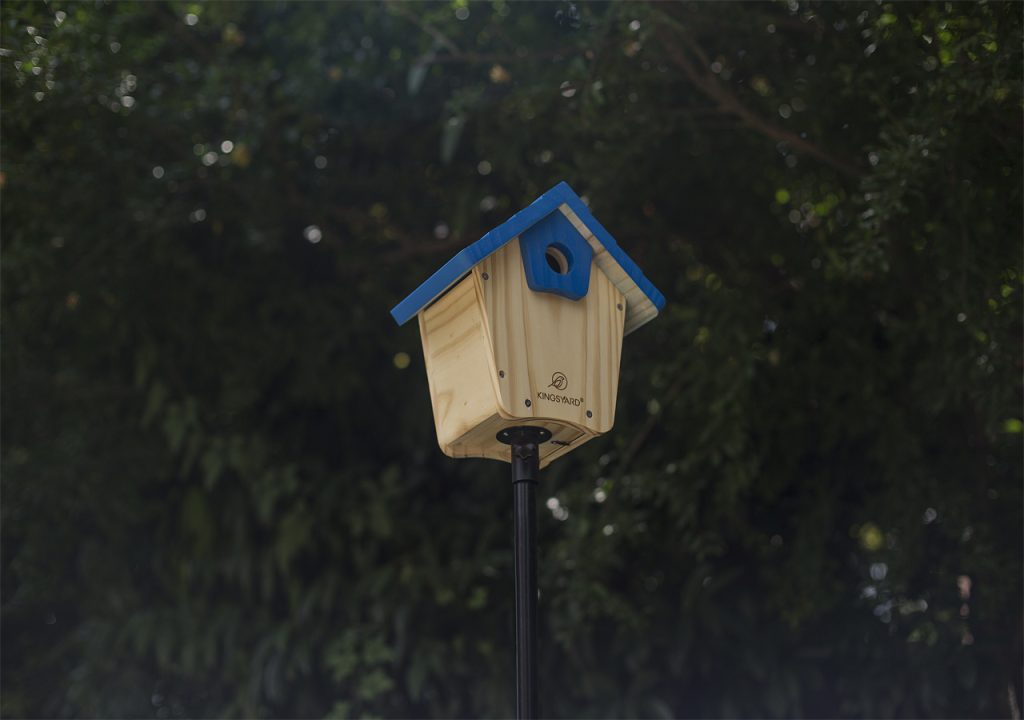
Roosting
Roosting, which is when birds rest or sleep, especially when so many birds come together to do so and cuddle, is also effective to maintain body heat. Smaller birds may roost together in trees or shrubs, while larger cavity birds may use birdhouses.
Torpor
Torpor, which is similar to hibernation, is when animals, including birds, drastically lower their body temperature and heart rate due to a lack of physical activity to protect heat. This state is almost sleep-like.
This heating strategy is more common with hummingbirds than winter birds because winter birds typically don’t want to waste too much energy.
Summary
As we observe these feathered friends in the winter months, let us appreciate their tenacity and resourcefulness. By providing them with food and suitable habitats, we can also play a role in supporting their survival during this challenging season. So, the next time you see a bird braving the cold, take a moment to marvel at their extraordinary abilities and remember that even in the harshest of conditions, nature finds a way to thrive.
